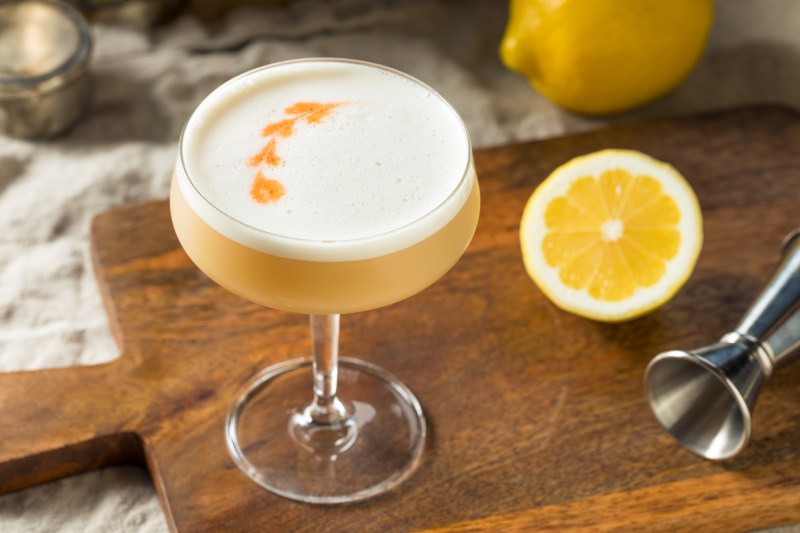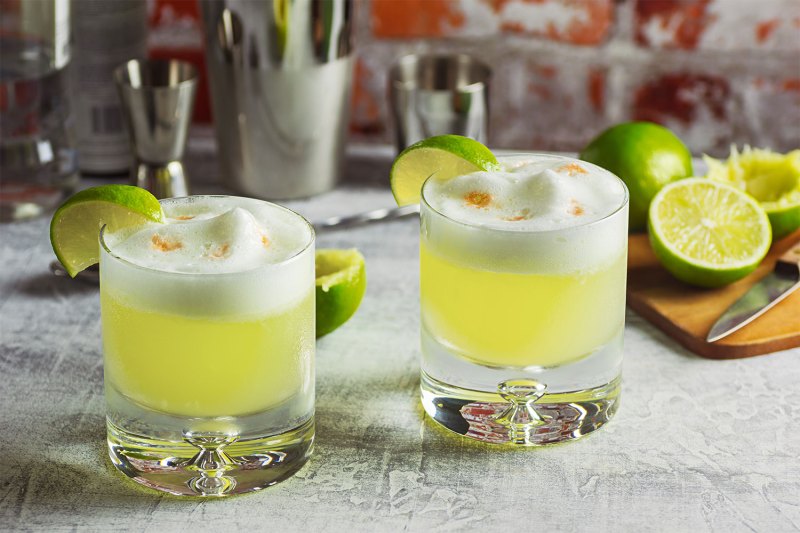What is pisco, you ask? Pisco is one of the many sub-ategories of grape brandy — a spirit distilled from fermented grape juice (aka wine). Just as Armagnac, cognac, and American brandy each have rules and regulations on how and where they can be made, so does pisco.
Pisco hails from South America and can only be produced in Chile or Peru. In the mid-16th century, Spanish conquistadors brought European grapes to South America, where they planted many vines for fruit. After a surplus of fruit due to Spain’s decision to limit wine exports, locals were forced to think of other methods to preserve their wines and opted for distillation — a relatively new concept at the time. By the 17th century, the first piscos were made (at the time, they were referred to as Aguardientes), and they eventually made their way into North America, where they became popular in U.S. cities, including San Francisco. They can be sipped neat or as part of a cocktail like the pisco sour.
While pisco is one category of brandy, there are significant differences between the ones produced in Chile as opposed to Peru.
Chilean vs. Peruvian pisco

Without getting into the thick of it, there is a bit of an unending debate as to where the spirit originated — this is mostly because, in the early 1600s, Peru and Chile were considered two distinct parts of the same territory as opposed to two independent countries as they exist today. Regardless of the spirit’s true origin — which Peru seems to have a stronger claim to — there are genuine differences in the style of how each is produced today. We won’t do the deep dive as the differences are very nuanced, but here is the gist of what separates the two styles.
The grapes
There are specific sets of grapes that can be used to make pisco. In Peru, 8 types can be used, separated into aromatic and non-aromatic varieties. The Peruvian aromatic varieties include Italia, Torontel, Moscatel, and Albilla. Non-aromatic varieties are Quebranta, Negra Criolla, Mollar, and Uvina. In Chile, however, there are up to 13 different grape varietals that can be used to make pisco, with five being the most commonly used: Moscatel Rosado, Moscatel de Austria, Muscat d’Alexandrie, Pedro Jimenez, and Torontel.
In both Peru and Chile, the grapes can be used to make three main styles of pisco: pisco puro (made from one grape variety — the best way to taste the differences between grapes), pisco acholado (a blend of grapes, fermented grapes or distillations), and pisco mosto verde (distilled from grape must that has not fully fermented).
In Chile, they use the degrees of alcohol to define the type of pisco further: Pisco Corriente o Tradicional (30-35% ABV), Pisco Especial (35-40% ABV), Pisco Reservado (43% ABV), or Gran Pisco (43% or higher ABV).
The region
Peruvian pisco is made in five D.O. (Denomination of Origin) regions: Lima, Ica, Arequipa, Moquegua, and Tacna. Chilean pisco is made in two protected areas: Atacama and Coquimbo.
The distillation
The main differentiator between the two styles here is that Peruvian pisco must be distilled to proof — that means when it comes off the still, that is what is aged and then bottled without proofing down with water — while Chilean pisco does not need to be distilled to proof. In Peru, pisco can only be distilled in copper pot stills, while Chilean piscos can also be made from column stills. As mentioned before, Chile also uses the ABV percentage to further define its piscos, something that Peruvian expressions do not.
The aging
In Peru, the distilled to-proof spirit must age for at least three months in neutral containers like glass or steel, but can never be aged in wood like cognac, Armagnac, etc., while Chilean pisco is allowed to be aged in wood. All in all, Peruvian pisco is a pure expression of the raw material, whereas Chilean pisco can be influenced by oak, which makes it more suitable for whiskey,
How to drink pisco

Before having pisco in a cocktail it’s best to sip the spirit neat to understand what you’re working with. Aromatic piscos are bright and floral, with a distinct grape character whereas piscos that are made primarily with non-aromatic varieties are more earth and spice-driven. Both are worth tasting on their own, and each brings something different to the table.
In Peru, many bars and restaurants make their own infusions, or macerados, with various herbs and fruits — these are also commonly mixed in cocktails. The range of flavors is endless in terms of crafting cocktails, but for beginners, it’s best to try something like the classic Pisco Sour.
As with every other spirit category, the range of flavors to experience within this category is vast and complex, so taste as many as you can until you find which one you like because there is a pisco for everyone.
Try a pisco punch

Once you develop a taste for pisco, you can use it to expand your cocktail knowledge and bring back some very old cocktails, like the pisco punch. This cocktail originated in San Francisco at the Bank Exchange & Billiard Saloon sometime between around the 1890s. It became famous thanks to mentions in pieces written by famous writers such as Mark Twain and Rudyard Kipling. The cocktail is still featured in many San Francisco lounges to this day.
Pisco punch recipe
(Recipe from Difford’s Guide)
Ingredients
- 2 dried cloves
- 1 2/3 ounces pisco
- 1 ounce fresh pineapple juice
- 1/2 ounce fresh orange juice
- 1/2 ounce fresh lemon juice
- 1/2 ounce simple syrup (2 parts sugar to 1 part water)
- 2/3 ounce brut Champagne or sparkling wine
Method
- Muddle the cloves in the base of a shaker.
- Add the pisco, pineapple juice, orange juice, lemon juice, and simple syrup.
- Shake with ice and strain into an ice-filled Collins glass.
- Top with Champagne or sparkling wine and serve.




